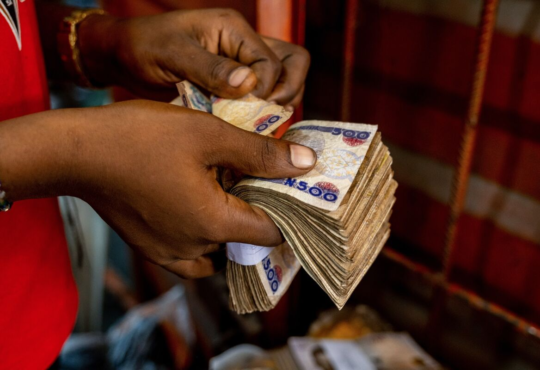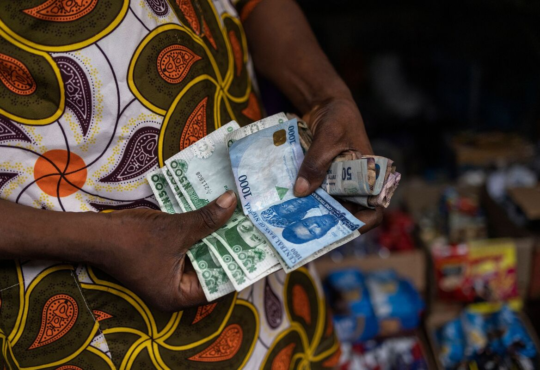
After years of delay, one of the world’s most ambitious refinery projects is approaching start-up, eventually promising some 650,000 barrels per day of diesel, gasoline and other products to Nigeria, the West Africa region and Europe, still struggling in the aftermath of embargos on Russian crude and products. With an appropriate policy framework and sufficient locally sourced feedstock, the Dangote refinery could help solve Nigeria’s perennial fuel shortages and foreign currency crises. But plans are already off-course, with crude shortages forcing the refinery to import feedstock for its test run. Should local crude shortages persist, Nigeria could remain reliant on imports over the longer term, while exporting both its own crude and Dangote’s products.
When Aliko Dangote, an industrialist from the northern state of Kano, first announced the project in 2013, analysts were skeptical. Dozens of proposed refinery schemes had sunk without a trace in previous years and not a single refinery had been built since 1988. The original scheme envisaged capacity of up to 400,000 b/d and a price tag of $9 billion.
A functioning refinery would threaten the vast patronage network that had operated for decades. Vested interests included Nigerian National Petroleum Corp. (now NNPC Ltd.), whose three refineries functioned at a fraction of their 445,000 b/d total capacity, and international traders profiting from lifting Nigeria’s crude and supplying products back while locking in hefty margins. The then-gasoline subsidy supported a vast business in fraud and smuggling to neighboring countries.
But Dangote differed from the other refinery sponsors. He had a track record of investing in his plants, and his companies dominated production of staple products from cement to flour. He had a vast set of assets to secure against loans, and a reputation for always making money. Former President Muhammadu Buhari was a statist, but his government was happy to support the private project of a fellow northerner. Dangote made it clear early on that he did not want to partner with NNPC, perennially in arrears to creditors and long regarded as an unreliable partner.
By 2018, Dangote had changed the site of his original project to Lagos’ Lekki free zone and expanded design capacity to 650,000 b/d, with the price tag rising to $14 billion. The project is said to have lacked a competent turnkey contractor to preside over the Indian and Chinese companies carrying out much of the work, resulting in mistakes, delays and massive extra work. The financial challenges increased as the completion date kept shifting.
Dangote, Nigeria Under Pressure
By August 2021, debt had reportedly climbed to an estimated $7 billion and the refinery’s price tag to $19 billion. As banks started to call in their loans, Dangote compromised and accepted NNPC as an investor with 20%. NNPC borrowed some of the money and promised part of the rest in crude supply to the refinery. Buhari forced Dangote to inaugurate the refinery in May, long before it was ready, so he could take some credit before handing over to the current president, Bola Tinubu.
Tinubu’s team, which found Nigeria’s economy and finances to be even worse than expected, then pressured Dangote to hasten start-up of the refinery to supply the market and ease pressure on Nigeria’s currency. Tinubu had abolished the gasoline subsidy that had cost $10 billion in 2022 alone and unified the exchange rate that precipitated a run on the naira. The refinery would both save and earn dollars supplying gasoline locally and exporting surplus diesel. Gasoline demand alone was estimated at around 1.2 million tons (282,000 b/d) in August.
Technical Challenges
Assuming the test run is successful, plans call for producing 350,000-370,000 b/d of diesel later this month, rising, with gasoline output, to 650,000 b/d from December, according to Dangote Group Executive Director Devakumar Edwin. However, as the test cargoes have yet to be run, and hitches ironed out, the schedule is unlikely to be met, sources say. NNPC has already failed to deliver Nigerian crude in time for the test day, prompting Dangote to court both Vitol and Trafigura to supply cargoes of US West Texas Intermediate crude.
NNPC will likely continue to struggle to supply enough crude in time for full commercial start-up, which now appears more likely to happen in 2024. NNPC, which generally gets up to 50% of Nigeria’s total production, says it has right of first refusal to supply at least 300,000 b/d to the refinery. Nigeria’s output averaged 1.4 million b/d in August.
The end of NNPC’s crude-for-product swaps, which mopped up to 350,000 b/d, should have made supplying the refinery feasible. But much will depend on crude production and NNPC’s commitments to creditors. While output has recovered from lows of 1.1 million b/d of crude and condensates seen in August-September 2022, lack of investment and crude oil theft remain problematic: NNPC reported a spike in crude theft in the last week of September.
NNPC remains heavily committed going forward: It owes arrears to its upstream joint venture partners, and has to repay the money it borrowed to buy one-third of its stake in the refinery. While details of other outstanding bank loans remain elusive, NNPC is already building up debt to oil traders now granting up to 90-day credit. In the meantime, it has signed up for a $3 billion facility with Africa Export-Import Bank, which will, if syndicated, be used to repay the products bought on credit and NNPC’s taxes and royalties.
If NNPC fails to supply under its agreement, Dangote will have to find dollars to buy feedstock crude. It could then try to sell production locally in the free zone, but dollars are scarce and expensive in Nigeria. More probable is that it would either need to export products for dollars or enter into a deal with traders, under which they deliver the crude and lift the products, paying a processing fee to the refinery. Such an arrangement would tide Dangote over, but it would be sub-optimal for profits.
Christina Katsouris is an Africa Correspondent at Energy Intelligence. A version of this article originally appeared in Energy Compass.






